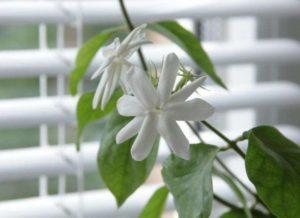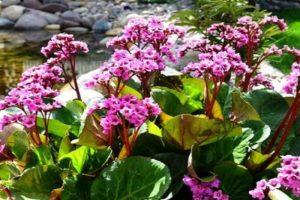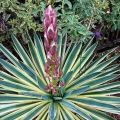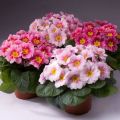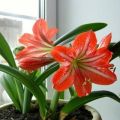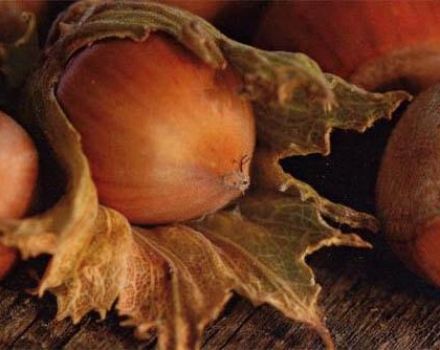Features of caring for room yucca at home, reproduction and transplantation
Yucca noble indoor is considered an expensive plant, which flower growers are not ashamed to present as a gift. It is ideal for decorating the interior of a home, unpretentious, has an exotic appearance. Yucca is often called a palm tree, which is an erroneous statement: it is a member of the Liliaceae family and has nothing in common with palms, except for a slight external resemblance.
Description and characteristics of culture
The description of indoor yucca allows you to highlight its characteristic features and not be confused with other similar plants. A properly composed characteristic makes it possible to recognize a noble flower and allocate an honorable place for it in your home.
External description
The height of indoor yucca reaches 2 meters. The plant has a lignified stem that looks like an elephant's leg, at the top covered with leaves of green or bluish color. The yucca foliage sticks out in different directions, drooping a little. Its shape is xiphoid. Each leaf is capable of growing up to 0.5 meters in length. There are varieties in which the trunk is completely absent, and the crown is 1 or more sockets.
Root system
A weak spot of indoor yucca is its root system. Although the flower itself is large, its roots are small. In too dense soil, they suffocate, and with an excess of moisture they rot, and the plant dies.
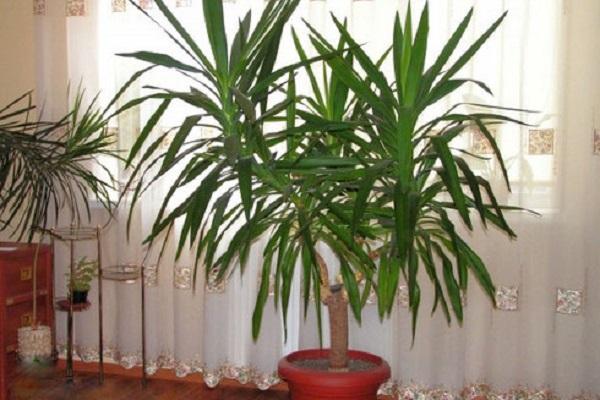
All about blooming
Not all plant owners can admire the flowering of homemade yucca. Some varieties in captivity categorically refuse to throw out the peduncle, even with proper care and maintenance.
First bloom
Yucca blooms for the first time only in the 7-10th year of life. Under indoor conditions, this process can be delayed, or the plant does not form a flower bud at all.
How often does yucca bloom?
The flowering frequency of yucca is directly dependent on the cultivated variety. In most cases, it forms a kidney once a year.

Suitable varieties for home cultivation
Not all species found in the wild are suitable for indoor cultivation. Keep this in mind when choosing a green pet for your space. Most often, the following varieties of yucca are found on window sills:
- Elephant (Giant);
- Aloe leaf;
- Glorious;
- Filamentous;
- Sizaya.
Growing conditions
To grow yucca indoors and wait for its flowering, it is necessary to create suitable conditions for this and follow the recommendations of experienced specialists.

Optimal location: lighting and location
Yucca belongs to the light-loving cultures, therefore it is preferable to place it on a stand near the eastern or western windows. The room should have a sufficient level of illumination, uniform throughout the day. This factor has a significant impact not only on growth and development, but also on the decorative qualities of the flower.
It is not recommended to place the yucca on the floor, as in this case it will not receive additional light. The stand should be flush with the windowsill. If the plant is placed near the south window, then at noon it will be necessary to create additional protection from the scorching sun rays (blinds or curtains) to prevent sunburn..
A small young flower can be kept right on the windowsill. In summer, they will have to be protected from sunburn, and in winter, make sure that they do not touch the cold window. In winter, in any place, yucca suffers from a lack of lighting, therefore it is imperative to organize illumination using phytolamp or fluorescent lamp. Daylight hours for a plant should last up to 12 hours.
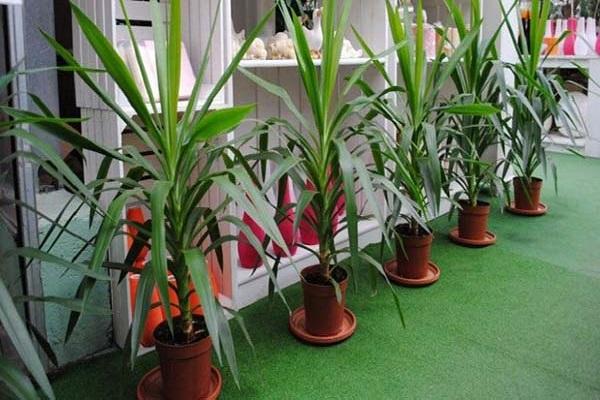
Temperature regime
Yucca is successfully grown at standard room temperature. An indicator of 22-26 ° C is considered optimal. In winter, it is preferable to reduce the temperature indicators to 16-20 ° C. The plant does not like sudden changes, and also needs protection from hot air flows from the heating battery.
Humidity
Yucca does not need high humidity. The standard indicator of a city apartment (40-50%) is sufficient for it. If the humidity drops below this limit, then the leaves of the plant are sprayed, and artificial air humidifiers are installed.
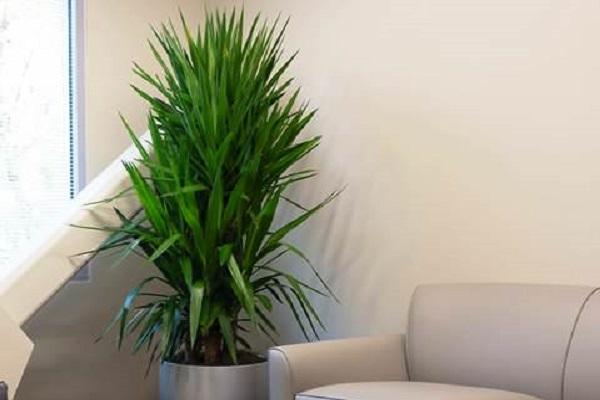
Substrate requirements
For planting yucca, you can buy ready-made soil in the store. Suitable substrate for growing palms, dracaena and yucca. It is also prepared independently, necessarily including the following components:
- sod land;
- rotted needles;
- coarse river sand;
- humus.
It is allowed to replace humus with purchased biohumus, and add peat to the leaf part. An adult yucca needs a denser soil, because it contains half of the sod soil. A drainage layer must be laid on the bottom of the pot, and only then is the nutritious soil for the plant filled up.
Pot volume and dimensions
Planting a yucca requires a deep pot that is spacious in width. The root system should be placed freely in the container, and a distance of 1.5 cm is left to the walls.
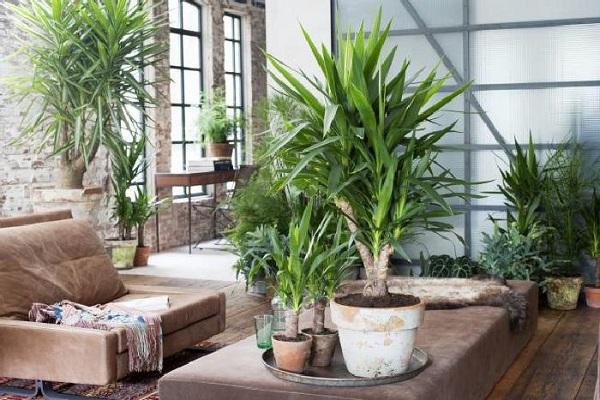
Planting scheme and technology
Planting a yucca on your own is not so difficult, it is important to get high-quality planting material. There are several methods for propagating a decorative flower, in which each action taken is described step by step. It is worth noting that until complete rooting, the soil should be kept moderately moist. When overdried, the seedling will dry out, and with waterlogging, there is a great risk of decay.
Pots with unrooted yuccas are placed in a warm room. It will be advisable to arrange heating of the lower part of the container. A plastic bag or a piece of plastic bottle is put on top of the plant to achieve the effect of a greenhouse.A month after planting, the root system begins to form, and after a couple of months new shoots break through, signaling the need for a flower transplant.
Plant care at home
Yucca is an unpretentious flower, but it requires a little attention and care. In gratitude, the plant will delight you with decorative qualities, and possibly even flowering.
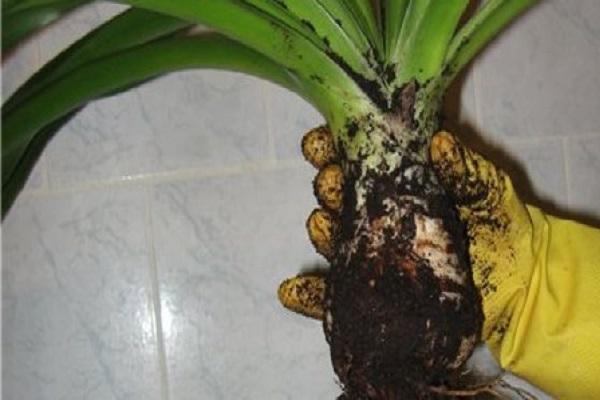
Irrigation system
Watering the yucca is permissible only with settled water at room temperature in order to avoid soil acidification. The frequency of irrigation is directly related to the size and age of the plant. The larger it is, the less often you need to water it. The volume of the pot also plays an important role. The soil dries out faster in a 5 liter container than in a 20 liter container.
In summer, yucca grows actively, therefore it needs more liquid than in winter. The need for watering is determined by the state of the topsoil. You should not allow the earthen coma to dry out strongly, but excess moisture also negatively affects the health of the flower.
Top dressing and fertilization
You can feed the yucca with one of the drugs offered in the store. The modern assortment allows you to choose both a complex mineral and organic fertilizer, suitable specifically for this type of plant. You should strictly adhere to the recommendations and dosages specified by the manufacturer. Otherwise, instead of the expected positive result, significant harm can be caused to the flower. It is also taken into account that in the fall the amount of dressings decreases, since the yucca prepares for the dormant period and consumes less nutrients from the soil.
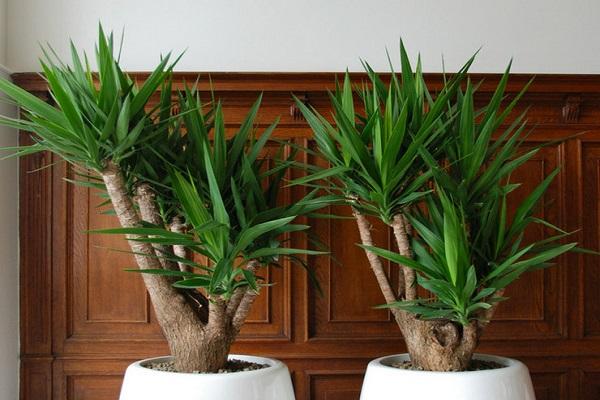
Formative pruning
Trimming the yucca is required in order for it to have a beautiful shape. Otherwise, the plant will have one elongated trunk with a bunch of leaves at the end. Also, using this procedure, you can rejuvenate an outdated tree. The first pruning is carried out at a time when the height of the trunk reaches 65 cm, and its diameter is 5 cm. It is preferable to carry out work in the spring, after watering the flower.
When pruning, the top of the yucca is removed and the trunk is left 45 cm high. When the cut site dries up a little, it is treated with garden pitch or sprinkled with activated carbon. Several axillary buds are then activated. Leave only those of them that will form the necessary branches, the rest are used for reproduction.

Transfer
Immediately after purchase, the yucca will need to be transplanted. Also, this procedure is carried out with:
- suspicion of a disease of the root system;
- every 2-3 years, increasing the volume of the pot.
The transplant is carried out in the spring, having previously prepared a larger vessel, soil mixture and drainage. A few days before the planned work, they stop watering the yucca. If the soil in the pot is still good, then only the top layer is removed.
Before direct transplantation, a thorough examination of the state of the root system is carried out. If there are soft and darkened areas, they are immediately cut off, and the wounds are treated with activated carbon powder.
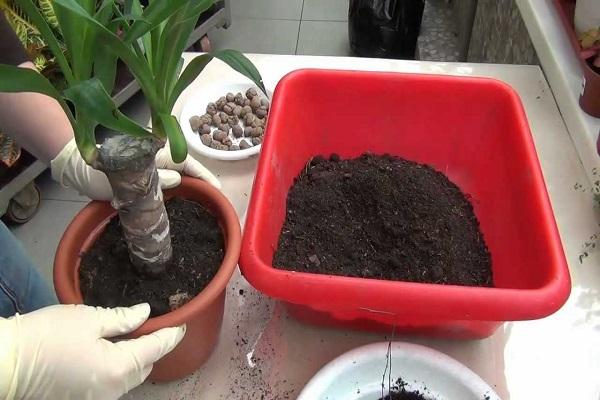
How to care for leaves, dust removal
Leaves are the main decorative element of yucca, therefore their condition is very important. Over time, dust accumulates on them, which not only spoils the appearance, but also negatively affects the health of the flower. Some people prefer to send a green pet to the shower, washing off all unnecessary things, but it will be correct to regularly wipe the leaves with a damp cloth. After the shower, the plant should be allowed to dry in a place protected from light, and it is better to carry out the procedure in the evening.
Diseases and their treatment
Like any indoor flower, yucca is susceptible to pests and various diseases, which greatly impair the decorative properties and can even lead to the death of the flower.
Foliage
Curled leaves often signal low temperatures and lack of lighting during the rest period. It is necessary to take care of the normalization of these indicators by installing phytolamps.
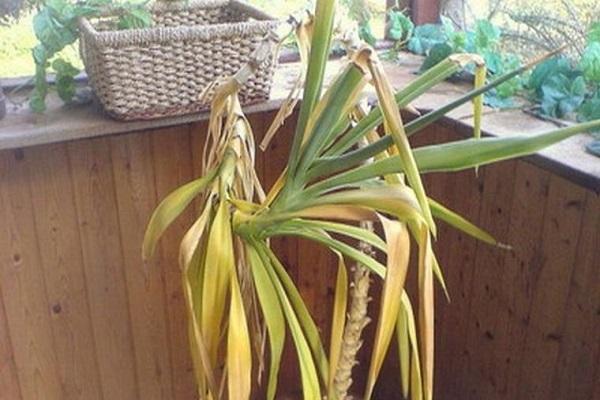
Leaf spot
This symptom indicates the presence of fungal diseases provoked by excessive moisture. It is necessary to reduce the number of waterings, reduce the level of humidity in the room, and remove and destroy the affected parts of the yucca.
Dry spots on the leaves
An alarm indicates an excess of light and insufficient humidity. It is recommended to move the pot to partial shade and increase the humidity level.
Rot
Root decay is most often caused by excess moisture and stagnant water in the pan. It is urgent to transplant the plant, removing all affected parts and treating it with activated carbon, a weak solution of potassium permanganate.

Fight pests
Houseplant pests are no less dangerous than pathogens. We must fight them decisively and in a timely manner.
Spider mite
The pest acts on the underside of the leaf plate, as a result of which it becomes dull, and eventually dies off altogether. Effective prevention is spraying green mass with soapy water and insecticidal agents.
False shield
The false shield acts not only on the leaves, but also on the stems of the yucca. If the pest is not destroyed in a timely manner, the flower may die. To combat it, use a solution of the drug "Actellik", which is used to wipe the sheet plates.
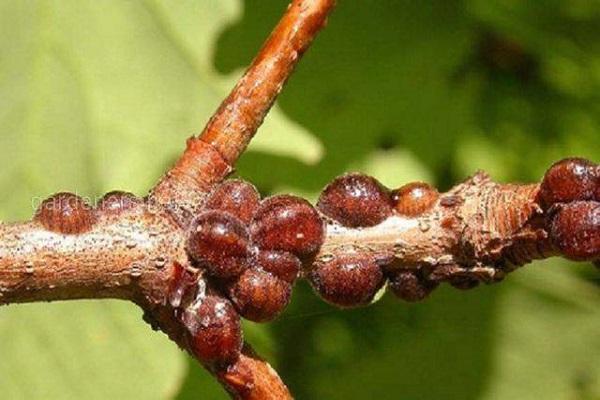
Reproduction of culture
There are several effective and simple ways to propagate room yucca, which are used by flower growers.
Plant cuttings
Propagation of a false palm by cuttings is carried out mainly in the spring, but this method is practiced until August. To obtain planting material, it is recommended to divide the stem of the plant into 10 cm pieces each. A stalk from the top is planted in a nutrient mixture and a greenhouse is formed on top of it. The rest of the cuttings are placed horizontally in the soil and a little buried. After a while, the dormant buds will awaken and form new shoots. When they grow a little, young yuccas can be planted in separate pots.

Sowing with seeds
Seeds are sown in nutrient soil, a sheet of glass is placed on top or covered with transparent film to organize a mini-greenhouse. The humidity in it is maintained at 75%, daily ventilation is organized, and if necessary, the soil is sprayed from a spray bottle. A month later, the first shoots of yucca are shown. As soon as they grow up, each seedling is planted in a separate container.
Tops
Yucca can be propagated using any broken twig or cut off top with a rosette of leaves. If it is long, then the trunk is slightly shortened and allowed to dry for a couple of hours, and then the lower leaves are removed. The resulting stalk is planted in a nutrient soil and covered with cellophane or a glass jar. The soil should be kept slightly moist.

The stem cuttings can be placed in water for rooting. To avoid decay, activated carbon and ash are added there. As soon as the roots are formed, the yucca is planted in a separate prepared pot. The method of reproduction in segments makes it possible to save a flower that has lost its root system for various reasons.
Propagate by lateral processes
This method is very similar to yucca propagation by cuttings. A sufficient number of lateral layers are formed from the main trunk of an adult tree. If they are carefully separated and sent to water or wet sand for further rooting, then after a while you can get a young independent plant. The fact that the flower has successfully taken root and began to develop is evidenced by the appearance of new shoots.
